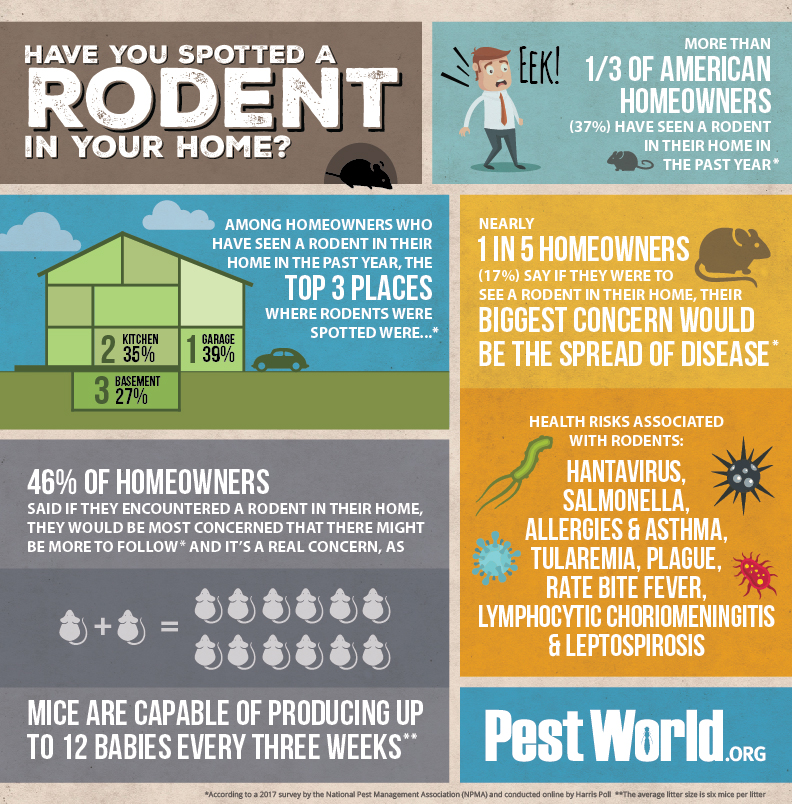Capitalize On Your Understanding Of Rodent Nesting Patterns To Defeat These Insects And Fine-Tune Your Rodent Monitoring Techniques
Capitalize On Your Understanding Of Rodent Nesting Patterns To Defeat These Insects And Fine-Tune Your Rodent Monitoring Techniques
Blog Article
Uploaded By-Payne Alston
When it concerns rodent control, understanding typical rodent behavior is essential to efficiently taking care of infestations. Did you recognize that rats have some fascinating nesting behaviors that might amaze you? By discovering their detailed behaviors, you can acquire valuable insights right into how to tackle rodent problems in a more tactical and effective way. So, let's decipher the enigmas behind these animals' actions and find out exactly how to outsmart them in your rodent control efforts.
Rat Nesting Habits
When observing rodents in their natural habitat, you'll see that they proactively look for products to create their nests. Rats, such as mice and rats, are clever creatures that utilize a variety of things like twigs, leaves, paper, and material to construct their homes. They're thorough in their nest-building process, typically lining their nests with softer materials like hair or feathers to develop a comfortable setting.
Rodents prefer to construct their nests in hidden and protected locations to secure themselves and their young from killers. Usual nesting spots include wall tooth cavities, attics, cellars, and also within insulation materials. By building their nests in these secluded areas, rodents can securely raise their offspring far from potential dangers.
It is essential to recognize the nesting routines of rats when implementing control steps. By disrupting their nests or eliminating products, you can prevent rodents from developing a visibility in your home or residential or commercial property. Correct hygiene and sealing entrance factors are also crucial steps in protecting against rodent problems.
Rodent Feeding Patterns
After observing rodents' nesting routines, it comes to be evident that their feeding patterns play a vital function in their daily lives and behaviors. Rodents, including mice and rats, are opportunistic feeders, meaning they'll take in whatever food resource is readily available. https://www.marketwatch.com/guides/home-improvement/orkin-reviews/ , choosing to forage for food during the cover of evening to stay clear of killers.
Rats have a diverse diet regimen, varying from grains, seeds, fruits, and veggies to pests, nuts, and also little pets. This flexibility in their food selections allows them to thrive in various settings, including urban areas where human food sources are bountiful.
https://docs.google.com/spreadsheets/d/1gu4ByGtghIofBNRz8YP_5WGzjsVBEXShijWYIWhrXN0/edit#gid=506519284 feeding patterns aren't just driven by cravings yet also by the need to stockpile food for times of scarcity. This actions is particularly visible in preparation for winter months or when nesting. Rodents are known to hoard food in their nests or burrows, ensuring a constant food supply. Understanding their feeding patterns is necessary in applying effective rodent control steps to disrupt their food sources and protect against problems.
Rodent Movement and Travel
Rodents browse their surroundings with dexterity and stealth, utilizing their keen senses to move swiftly through their atmospheres. These creatures are skilled mountain climbers, able to range wall surfaces and vertical surfaces with ease. They can also press via remarkably small openings, making it vital to seal off any prospective entry points in your house.
When it concerns traveling, rats often tend to adhere to acquainted paths, developing tracks along wall surfaces or skirting the edges of spaces. https://docs.google.com/spreadsheets/d/1yOH09JKCC0LcGhKsTO1Hm-BuljLtd_9Q_3_fSNhA5UQ/edit?usp=drive_link of habit, typically sticking to these developed courses as they forage for food or explore their surroundings.
Rodents are known for their nighttime habits, so you may hear them scooting about during the night as they look for food and water. Their motions are quick and irregular, enabling them to dart in and out of view in the blink of an eye.
Understanding exactly how rodents move and take a trip can aid you identify prospective infestation areas in your home and take proactive steps to prevent these parasites from acquiring a foothold.
Verdict
As you function to control rodents in your house, bear in mind that understanding their behavior is essential. By recognizing their nesting practices, feeding patterns, and motion, you can successfully protect against invasions.
Together, by taking positive steps to eliminate food resources and seal access factors, you can interrupt their familiar paths and force them to look for new locations, inevitably reducing the possibility of rodent presence in your living spaces.
